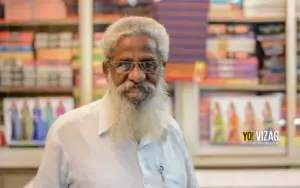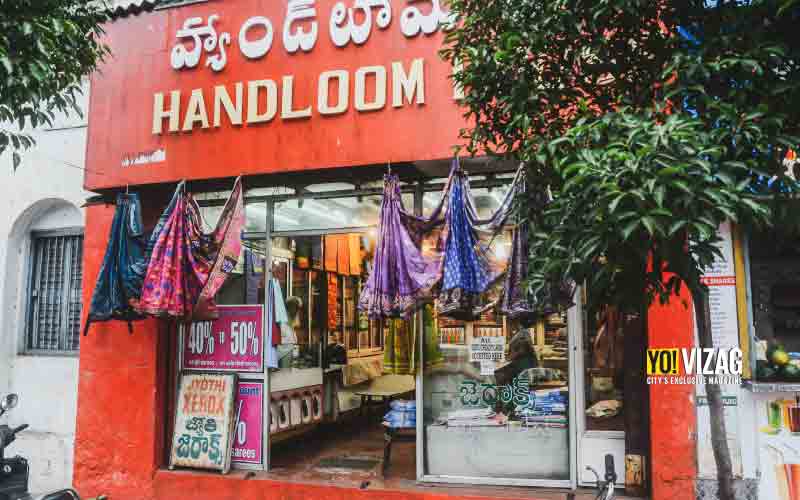In the by-lanes of Purna market in Visakhapatnam, is a handloom store that is slowly being forgotten with time.
In the 1960s, Visakhapatnam was a township centered in One Town area. Shopping extended along the length from Purna Market, up to One Town Police Station. And from there began the street of the gold sellers. It was in 1974 that Sri Narsimha Rao, from the Padmashali community of weavers, started ‘Handloom House’ along this very street. Hailing from Chirala, and looking for a market to sell handloom saris, he would come to Visakhapatnam with his uncle. His customers were mainly from the Brahmin community, and the two would go from door to door making sales. “That was in 1965, and later when we seemed to have a good market, my uncle and I set up shop.”
Slowly Narsimha Rao started travelling to other parts of South India, bringing in saris from places such as Venkatagiri, Madhavaram, Bengaluru and Madras as well. Many women would come to their shop for the designs, and Handloom House, apt to its name, would only sell handloom products, marking a large dominance in that market. The name they started with, has stayed on since then.
 Talking about those bygone days, he vividly recalls the Venkatagiri pure silver/ gold zari saris that they were famed for. Rates of gold and silver were much lesser and he remembers the rate of gold being Rs. 60 per tula! Gold coating would be done on pure silver by experts in the Marwari community. Long after the sari would tear, customers would be able to reuse the borders for their value in silver and gold. Slowly, with the rising rates of these precious metals, copper and gold were used, and later even that was removed completely. Nowadays, saris use duplicate materials, which have the shine and do not spoil over time.
Talking about those bygone days, he vividly recalls the Venkatagiri pure silver/ gold zari saris that they were famed for. Rates of gold and silver were much lesser and he remembers the rate of gold being Rs. 60 per tula! Gold coating would be done on pure silver by experts in the Marwari community. Long after the sari would tear, customers would be able to reuse the borders for their value in silver and gold. Slowly, with the rising rates of these precious metals, copper and gold were used, and later even that was removed completely. Nowadays, saris use duplicate materials, which have the shine and do not spoil over time.
He also recollects the start of powerloom. “As it takes a lot of time, for one person to make a sari, powerloom soon came into focus.” As a result, the same handloom sari could be created much faster and for less cost. He says that powerloom isn’t bad, for it speeds up work, but eats into the income of the handloom weaver.
For the lovers of handloom, Narsimha Rao recommends purchasing from stores such as APCO, handloom societies and shops like his, which will serve the only handloom. While his shop does have powerloom products too, he is happy to guide customers towards the handloom options.
With his handloom store located in one part of the CBM school building, he recollects the past of this glorious place and shares how Jagadamba was once considered the outskirts and was a God-forsaken place. He remembers Daba Gardens as a place true to its name, a locality with much greenery and a house. Having been in the city since 1957, he says the people have always been warm, kind and helpful. While the journey of his life took Narasimha Rao for a brief time into the military, his handloom store has seen its good and bad days. While business was in its prime up till 1982, the opening of big shops has led to retail merchants like him losing out business. He hopes tomorrow will be better with changing policies of the government, and while he can’t afford the huge rents of a big shop, we wish him better days ahead.










Discussion about this post